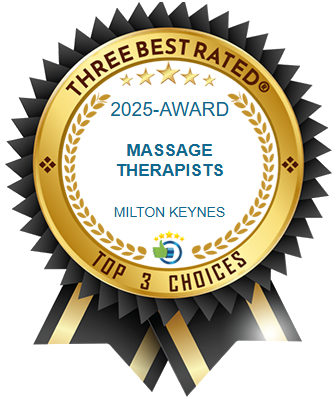The main difference between deep tissue massage and clinical massage is their purpose and technique. Deep tissue massage focuses on relieving chronic muscle tension by applying firm pressure to deeper muscle layers. Clinical massage is a broader term that includes various techniques tailored to treat specific medical conditions, injuries, or postural issues. While deep tissue massage is widely used for general relief from aching muscles, clinical massage is often part of a structured and customised rehabilitation plan.
Deep Tissue Massage vs. Clinical Massage: Techniques and Benefits
Clients often ask me to explain the difference between deep tissue massage and clinical massage. It’s a fair question, and for those who want to literally ‘feel the pressure,’ the answer is important.
Understanding the difference between the two is crucial if you are undecided about which treatment is best for you. I will also address some common misconceptions, like the belief that deep tissue massage has to be painful to be effective and explain how the individualised nature of clinical massage therapy can incorporate deep tissue massage techniques if that’s what you need.
Deep Tissue Massage: Relieving Chronic Muscle Tension
Deep tissue massage is known for its ability to penetrate deeper muscle layers, using slow strokes and firm pressure to relieve tension. This technique is popular with clients who suffer from chronic muscle pain, stiffness, or stress-related tightness.
However, deep tissue massage is often associated with pain, which some clients believe is necessary to go deeper. Everyone is different, and individual preferences on pressure can be catered for, but effective deep tissue work isn’t about brute force; it’s about precision, control, and working with the body rather than against it. A skilled therapist will adjust the intensity to ensure that the treatment is both effective and tolerable.
Clinical Massage: Targeted Pain Relief and Rehabilitation
Clinical massage is a structured, goal-oriented therapy designed to address specific pain, alignment, or mobility issues. Clinical massage can effectively relieve chronic pain, achieve postural correction, and improve mobility. Unlike deep tissue massages, clinical massage involves a full assessment before treatment and a treatment plan, utilising various techniques tailored to the client’s specific needs.
Think of clinical massage as a well-equipped toolbox, with deep tissue massage being one of the tools inside. A clinical massage therapist doesn’t only use various massage techniques; they use a combination of other techniques, such as trigger point therapy, myofascial release, and joint mobilisation, to achieve the best possible results for each client.
This approach makes clinical massage highly effective for treating conditions like:
- Lower Back Pain
- Chronic pain in muscles and joints
- Persistent headaches and migraines
- Fibromyalgia
- Sciatica
- Postural imbalances
- Sports injuries
- Repetitive strain injuries
Rather than providing a one-size-fits-all solution like a deep tissue massage, where the same technique is used on every client with minor variations, clinical massage is fully customised to what your body needs, and that can change from session to session.
What to expect from your clinical massage experience.
Deep Tissue Techniques Within Clinical Massage
So when clients ask, “Do you use deep tissue techniques in clinical massage?” The answer is yes, but with intention and precision.
Ida Rolf, a pioneer in structural integration, famously said, “It’s not how deep you go, but how you go deep.” This sentiment perfectly captures the essence of expert deep tissue work. It’s not about applying excessive pressure but about understanding the body’s structure and working strategically to release tension without causing unnecessary discomfort.
Clinical massage therapists don’t just press harder for the sake of it; we use deep tissue techniques selectively as part of your overall treatment. Each client is different, and those new to clinical massage quickly understand that deep tissue massage therapy is only used when it’s the most effective way to get results faster. The focus is on results, not just intensity, and I’m always delighted when clients see results within the first session.
Busting the Myth: Deep Tissue = Pain
One of the biggest misconceptions about deep tissue massage is that it must be painful to be effective. This simply isn’t true.
While some clients experience discomfort, especially when working on trigger points or chronic tightness, pain is not indicative of effective treatment. Pain doesn’t always equal progress. A well-executed deep tissue technique should feel like “productive discomfort” rather than pain that makes you go ‘OUCH’.
Personally, I prefer firm pressure when I have massage treatments, and even though some clients prefer to ‘feel the pressure’, I don’t believe in leaving a client feeling battered and bruised. Striking a balance between necessary pressure and unnecessary suffering is key, and my aim is always to create relief, not agony.
A powerful technique used in clinical massage therapy is myofascial structural integration. It involves working on the fascia (the connective tissue surrounding muscles, bones and internal organs), helping to free restrictions and restore fluid movement. Unlike forceful deep tissue work, myofascial release focuses on sustained pressure and gradual release, allowing the body to let go of tension naturally.
Massage for Lower Back Pain
Clinical massage can be very effective for lower back pain, often combining deep tissue techniques with myofascial release and trigger point therapy to target specific areas of pain and tension. Lower back pain is a common complaint, and beyond regular clinical massage therapy, I can offer broader advice on pain management techniques and self-care, aimed at preventing further injury.
Who Is Clinical Massage For?
Clinical massage is ideal for anyone experiencing persistent pain, injury, movement restrictions, or postural imbalances. It’s especially beneficial for individuals who need targeted treatment rather than just a general, deep-pressure massage.
However, if someone is looking for an ultra-intense experience purely for the sake of it, clinical massage may not be the right fit. The goal is to facilitate healing and recovery, not to push the body beyond its limits and break the pain barrier.
If you’re someone who truly enjoys being “beaten up” by a massage, that’s okay, but my approach prioritises effectiveness over excessive intensity. The right level of pressure is the one that helps you feel better, not worse.
In Summary
- Clinical massage is structured, goal-driven, and tailored to individual needs.
- Deep tissue massage can be effective when applied thoughtfully.
- Pain is not the objective—relief, mobility, and results are.
If you’re unsure which type of massage is right for you, booking a consultation can help determine the best approach for your specific concerns. Whether you need targeted therapeutic care or general muscle relief, choosing the right treatment can make all the difference in your recovery and well-being.
Book a FREE 20-minute online consultation, OR dive straight in and BOOK your first clinical massage appointment today, and get started on your journey to a life free of pain.
Frequently Asked Questions
What is the main difference between deep tissue massage and clinical massage?
Deep tissue massage focuses on relieving chronic muscle tension with firm pressure and slow strokes. Clinical massage is a customised treatment that includes various techniques to address specific pain, injuries, or postural issues.
Is deep tissue massage always painful?
No, deep tissue massage does not have to be painful to be effective. A skilled therapist applies controlled pressure to target muscle tension without causing excessive discomfort.
Can clinical massage include deep tissue techniques?
Yes, clinical massage therapists often use deep tissue techniques, but only when necessary. The focus is on strategic pressure and customised treatment rather than intensity alone.
Who should consider clinical massage over deep tissue massage?
Clinical massage is ideal for those with chronic pain, injuries, postural imbalances, or movement restrictions. It provides a targeted approach to pain relief and recovery.
What conditions can clinical massage help with?
Clinical massage can help with chronic pain, migraines, fibromyalgia, sciatica, sports injuries, repetitive strain injuries, and postural imbalances. Visit the blog section of our website for articles about specific conditions. Get advice about your most pressing concern… Understanding sciatica, Eliminating daily headaches, Fibromyalgia; symptoms, causes, and treatment, and Common lower back pain myths.
How does myofascial release differ from deep tissue massage?
Myofascial release is a technique used in clinical massage that applies sustained pressure to release tension in connective tissue. Unlike deep tissue massage, it focuses on gradual, gentle pressure rather than force.
Does deep tissue massage provide long-term relief?
Deep tissue massage can provide temporary relief from muscle tension. However, for lasting results, clinical massage, which includes a full treatment plan, may be more effective.
How do I know which massage type is best for me?
If you need general muscle relief, deep tissue massage may be suitable. If you have chronic pain, injuries, or movement issues, clinical massage offers a more tailored approach.
Can I request a combination of deep tissue and clinical massage?
Yes, many therapists can combine techniques based on your needs. Clinical massage is highly customisable and may include deep tissue methods when appropriate.
Will I feel sore after a deep tissue or clinical massage?
Some soreness is normal, especially after deep tissue work, but it should not be excessive. Proper technique ensures relief rather than prolonged discomfort.
Are there benefits of clinical massage for chronic back pain?
Yes, clinical massage can be very beneficial for chronic back pain by addressing the root causes of the pain through various techniques.
Does deep tissue massage help muscle tightness in the shoulders?
Yes, deep tissue massage can be effective for releasing muscle tightness in the shoulders by working directly on the tight muscle tissue.
Is clinical massage used for sport injury rehabilitation?
Yes, clinical massage is commonly used in sports injury rehabilitation to promote healing, reduce pain, and restore mobility. There is no doubt that sports massage plays an important role in keeping athletes moving, but clinical massage therapy is more comprehensive and aimed at addressing specific issues that may be impeding athletic performance.
How does sports massage differ from deep tissue or clinical massage?
While sports massage is indeed a vital component of clinical massage treatment protocol, we offer much more than that. Our approach combines a comprehensive fusion of techniques and assessment tools to provide you with the highest quality care. This blog compares Sports massage vs. Clinical massage.








